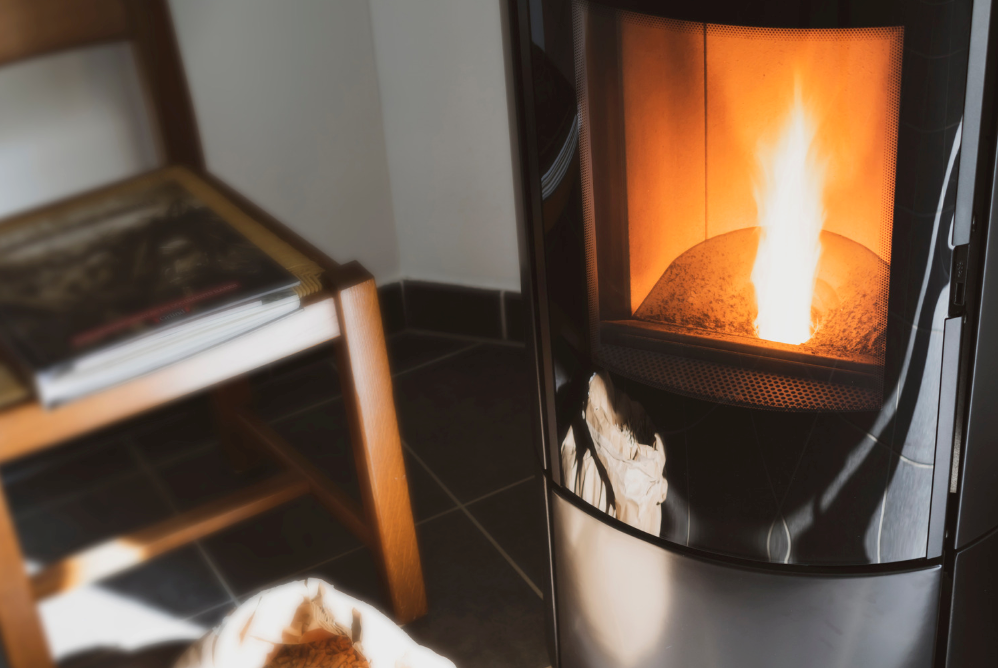
If you’ve got small children in the house, pellet stoves can raise some safety concerns—but the good news is, most of those risks can be easily managed with a little planning, the right setup and consistent maintenance.
Pellet Stoves Get Hot
Pellet stoves may look sleek and safe, but they’re still stoves—and they get hot to the touch, especially on the glass front, sides, and exhaust pipe. Curious hands (and fast little feet) can quickly lead to burns if precautions aren’t in place.
If possible, install your stove in a low-traffic area or somewhere already off-limits to kids. An out-of-the-way placement can act as a natural barrier, reducing temptation and chance encounters.
If that’s not an option, a safety guard or heat-resistant gate is your next best bet. Look for one that’s: stationary (not free-standing or easily tipped), fastened to the floor or wall, and tall enough to discourage climbing. A gate will create a physical buffer between your child and the stove, helping to prevent burns and accidents.
Proper Ventilation
Pellet stoves must be properly installed and vented to prevent the risk of carbon monoxide—a dangerous, odorless gas that can be fatal if it builds up indoors. Always have your stove installed by a professional, and be sure you have a working carbon monoxide detector (or combo CO/smoke detector) in the same room as the stove—and ideally in every sleeping area of the home.
Keep the Stove Clean
Pellet stoves do pose a fire risk if not regularly maintained. To stay safe:
- -Remove ashes weekly (or more often with heavy use)
- -Clean the stove thoroughly once a year
- -Keep combustibles—like clothes, toys and furniture—at a safe distance
Think of it like baby-proofing your heat source: the cleaner and clearer the area, the safer it is for everyone.
Teach the Basics Early
Even toddlers can learn a few key safety cues when it comes to the pellet stove. Reinforce simple commands like “HOT” and “NO” around the stove. With older kids, take time to explain why the stove is dangerous and what rules they should follow. You can even make it a routine part of winter safety conversations—like learning to look both ways before crossing the street.
In a perfect world, kids would never be left unsupervised near a pellet stove. In the real world, layered safety strategies—like gates, education, cleaning, and carbon monoxide alarms—are your best defense.
Pellet stoves are an efficient, cozy way to heat your home—but like any appliance, they require care and attention, especially with little ones around. A few smart precautions now can help ensure your home stays warm, safe, and worry-free all winter long.

